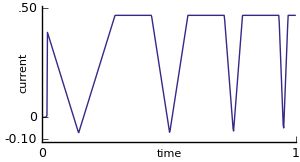Channel 45539-napf
General data
- ICG id: 2909
- ModelDB id: 45539
- Reference: Traub RD, Contreras D, Whittington MA (2005): Combined experimental/simulation studies of cellular and network mechanisms of epileptogenesis in vitro and in vivo.
Metadata classes
- Animal Model: rat
- Brain Area: layer 5, layer 2/3, cortex, auditory cortex, thalamocortical circuit, parietal cortex, layer 6, layer 4, barrel cortex
- Neuron Region: soma, dendrites
- Neuron Type: pyramidal cell, fast rhythmic bursting (FRB), thalamocortical relay cell (TC, TCR), thalamic reticular (RE) cell, regular spiking (RS) cell, intrinsically bursting (IB) cell, fast-spiking (FS) cell, low-threshold spiking (LTS) cell, interneuron, stellate cell, spiny cell, nontufted cell, tufted cell
- Runtime Q: Q1 (fast)
- Subtype: persistent
Metadata generic
- Age: adult
- Authors: M Lazarewicz.
- Comments: Modeling based on traub et al. (1994) and traub et al. (2003c), conductances from traub et al. 2003, model no. 20756, and cunningham et al. 2004. This file: sodium persistent current for rd traub et al., 2003, 2005. This persistent sodium current is based on the activation permissive quantity, m, from the transient sodium channel (t morse). Implementation by m lazarewicz 2003, modified by t morse, 2006--fastnashift init to 0 and removed from arg modification. Ancestor channels are both the naf and nap from model no. 20756. Modeling study, with many neurons in the cortex and thalamus. This channel model is one of four nap models used, it is unclear which cell types it is used in. The animal model info here is from electrophysiology experiments also in this paper, both in vivo and in vitro.
- Runtime: 4.26
- Temperature: Channel model has no temperature dependence. Experiments done at 34-37 deg C, simulations likely done at physiological temperatures.
Current Response Traces
Activation
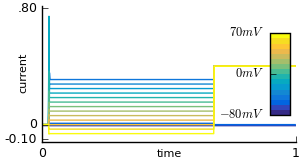
Inactivation
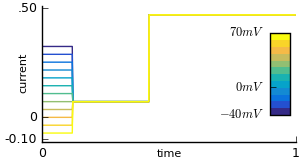
Deactivation
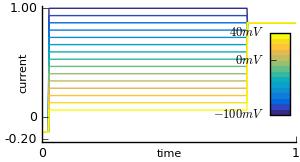
Action Potential
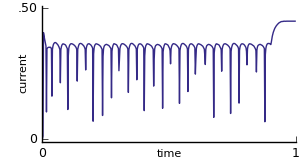
Ramp
